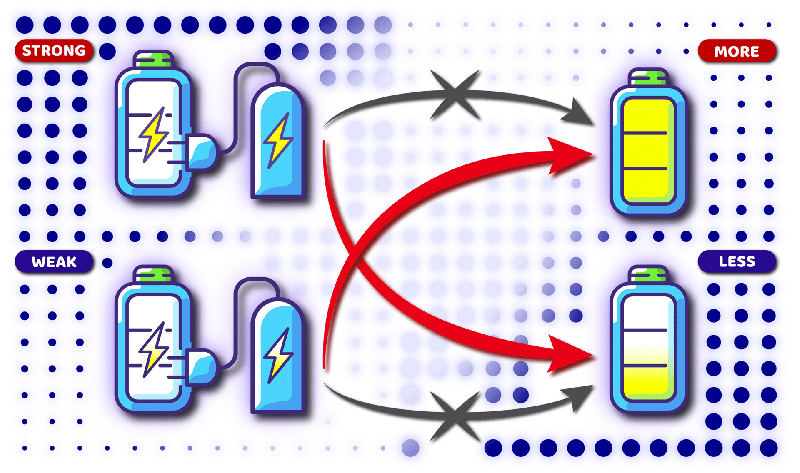Send this article to a friend:
December
19
2023
Send this article to a friend: December |
Quantum batteries could charge by breaking our understanding of time
In a sense, you could say that quantum batteries are powered by paradoxes. On paper, they work by storing energy in the quantum states of atoms and molecules – but of course, as soon as the word “quantum” enters the conversation you know weird stuff is about to happen. In this case, a new study has found that quantum batteries could work by violating cause-and-effect as we know it. “Current batteries for low-power devices, such as smartphones or sensors, typically use chemicals such as lithium to store charge, whereas a quantum battery uses microscopic particles like arrays of atoms,” said Yuanbo Chen, an author of the study. “While chemical batteries are governed by classical laws of physics, microscopic particles are quantum in nature, so we have a chance to explore ways of using them that bend or even break our intuitive notions of what takes place at small scales. I’m particularly interested in the way quantum particles can work to violate one of our most fundamental experiences, that of time.” In classical physics – the kind we experience in the large-scale world – causality is clearly linear. To return to the earlier analogy, dropping a glass (Event A) causes it to smash (Event B), but you can’t reverse the relationship between those two events. The glass didn’t fall because it was smashed. But in the spooky realm of quantum physics, this limitation doesn’t have to apply. And baking that paradox into a quantum battery could help make them more efficient. In the new study, scientists at the University of Tokyo conducted a lab experiment using lasers, lenses and mirrors that act as a large-scale quantum battery. Charging these batteries would usually require multiple charging stages that work one after another, but here the team took advantage of a quantum effect called indefinite causal order (ICO). Basically, once they bring the system into a quantum superposition, the causal order can exist in both directions at the same time, allowing the multiple charging steps to work together rather than sequentially.  Quantum batteries have been found to have an inverse interaction effect, where a weaker power source is better able to charge the battery, which improves their efficiency
2023 Chen et al. CC-BY-ND 4.0
“With ICO, we demonstrated that the way you charge a battery made up of quantum particles could drastically impact its performance,” said Chen. “We saw huge gains in both the energy stored in the system and the thermal efficiency. And somewhat counterintuitively, we discovered the surprising effect of an interaction that’s the inverse of what you might expect: A lower-power charger could provide higher energies with greater efficiency than a comparably higher-power charger using the same apparatus.” It may be hard for most people to get their heads around, but quantum batteries could one day be a reality. Currently they only exist as lab experiments, but scientists are slowly testing different aspects of them with the eventual goal of figuring out how to pull the various pieces together into a working whole. The research was published in the journal Physical Review Letters. Source: University of Tokyo
Michael has always been fascinated by space, technology, dinosaurs, and the weirder mysteries of physics and the universe. With a Bachelor of Arts in Professional Writing under his belt, he’s been writing for various online outlets and print publications for eight years, and New Atlas for the last three years.
|
Send this article to a friend:
 |
 |
 |